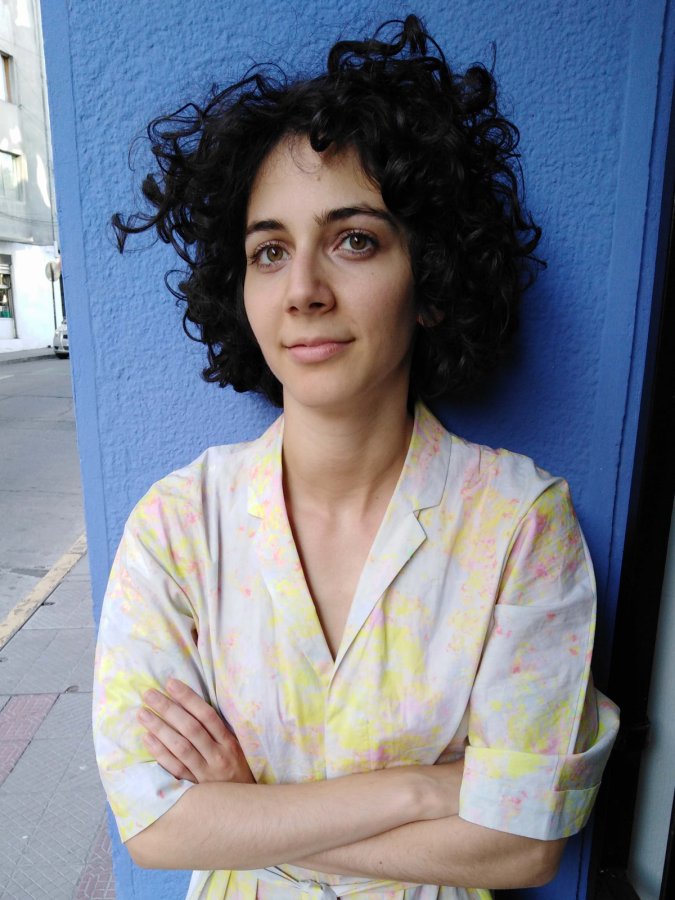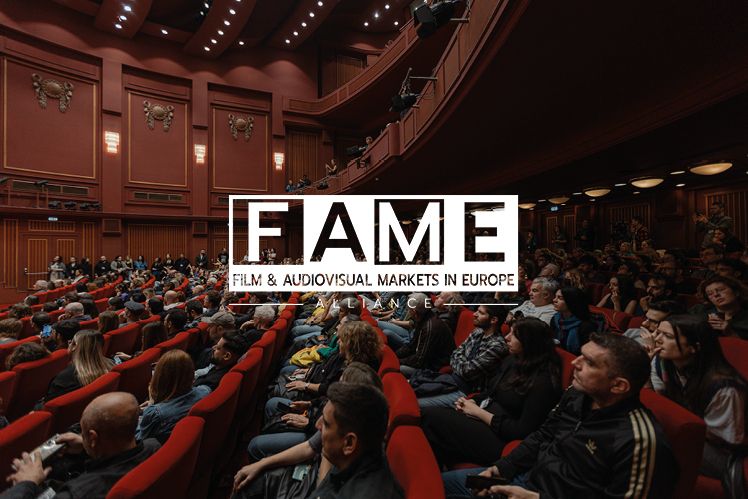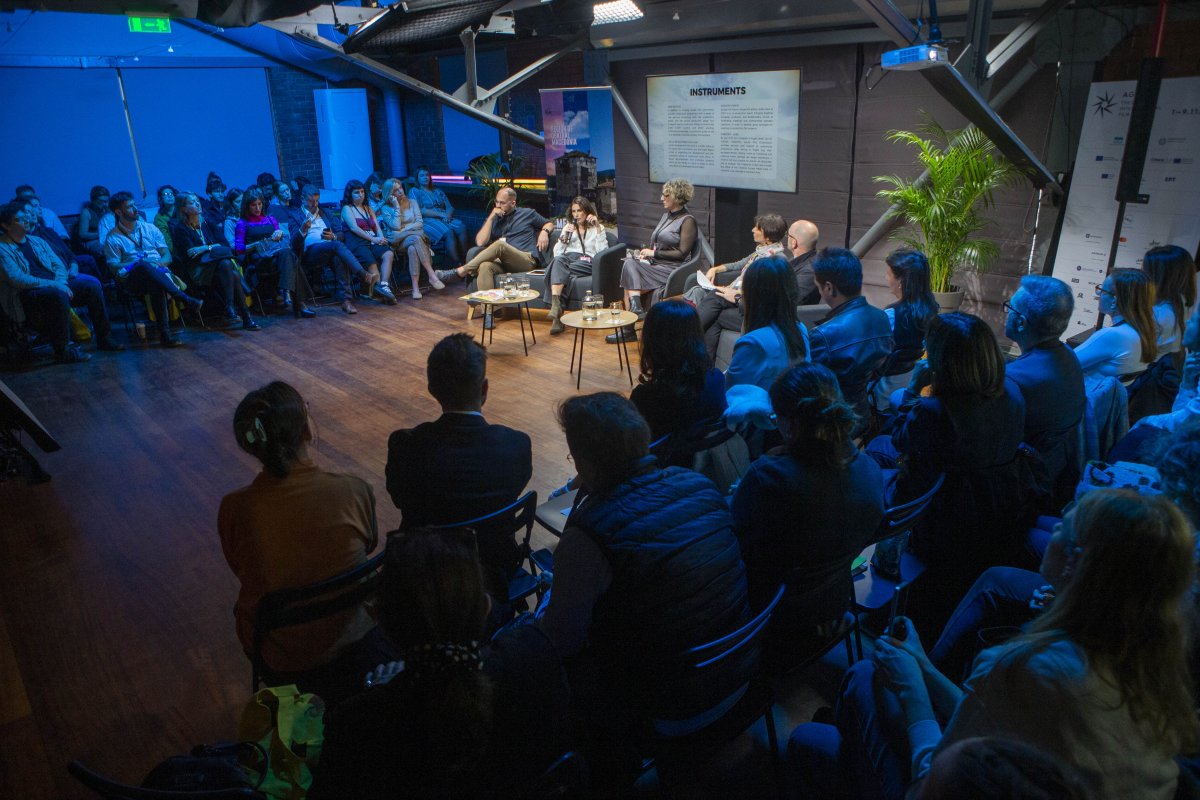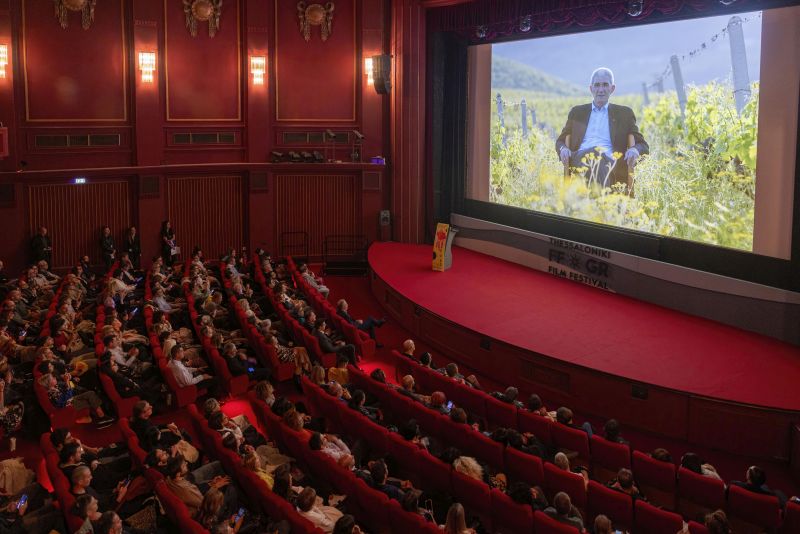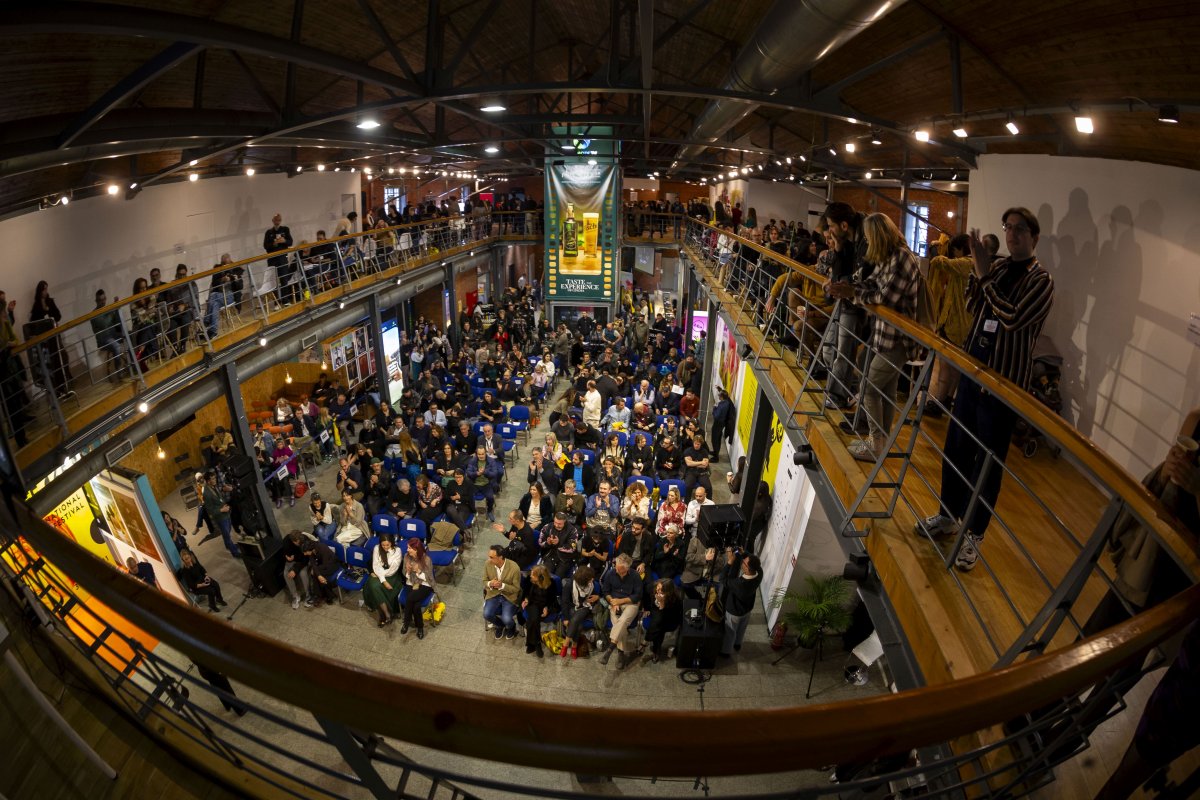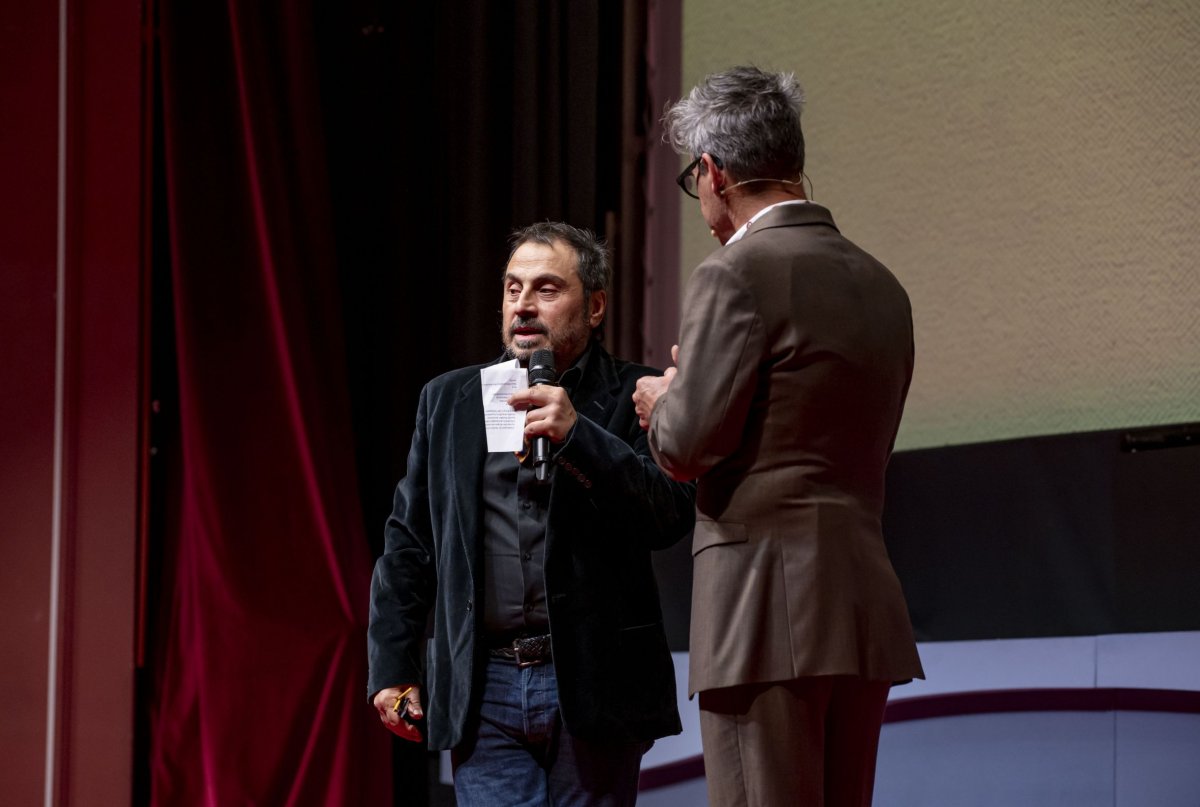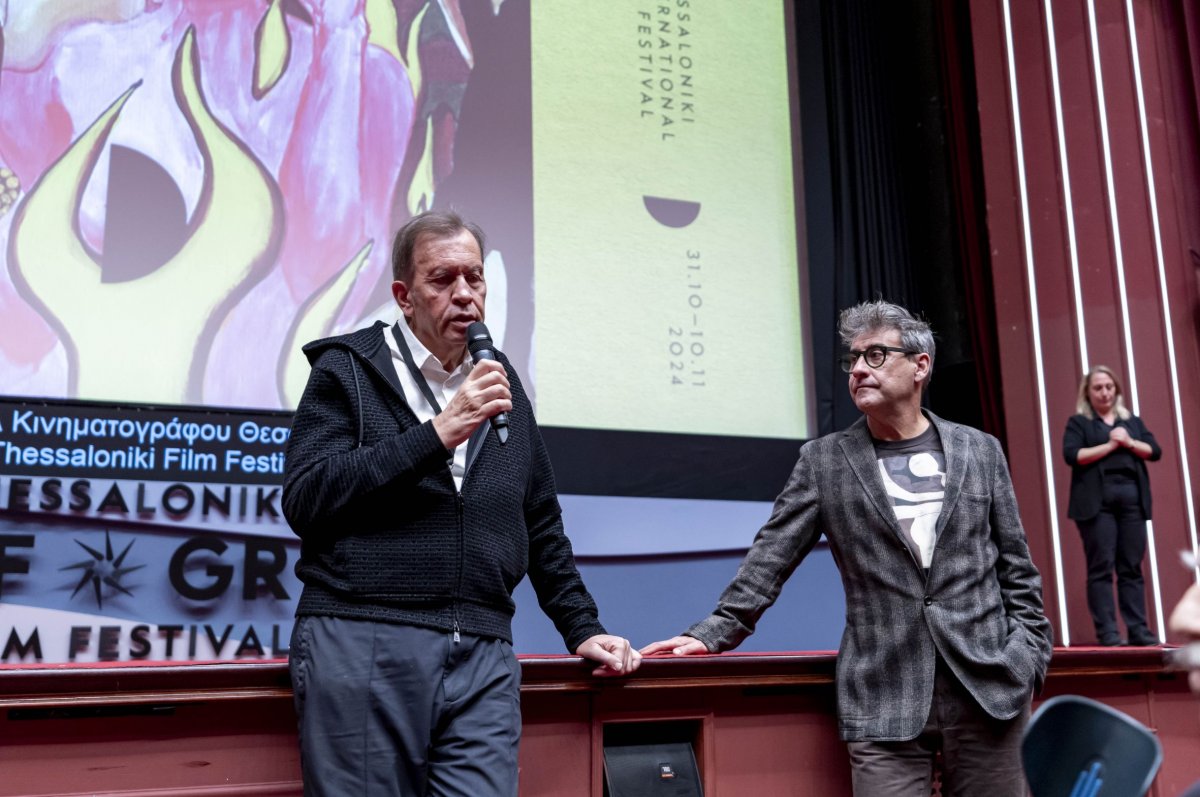Climate Hub, the Festival’s new initiative towards the goal of sustainability, includes a series of talks, with the participation of prestigious organizations, groups and experts on issues regarding environmental and social sustainability. Within the framework of the Climate Hub events of the 25th Thessaloniki Documentary Festival, a talk was held on Friday, March 3rd, at Warehouse C, under the title “The evolving nature of environmental storytelling”. Eleni Stefanou, multimedia content producer and former social media editor of The Guardian was the main speaker of the event, while Emma Doxiadi, the Festival’s sustainability coordinator, moderated the discussion.
“We welcome you to the first talk about Climate Hub. The goal of the Festival has always been hosting films that touch upon relevant social issues of a global scale. Besides, the discourse on climate crisis has shifted drastically in the last five years”, Ms. Doxiadi mentioned at first. Ms. Stefanou then took the floor. “Through my experience, I will share with you my thoughts and present to you some examples and stories relevant to the climate crisis. I first gained experience with storytelling in London for about seven years and then worked for The Guardian for five years, where I was the head of the social media team. Along with the multimedia and social media teams, we created original material and stories about the environmental crisis”.
She then referred to the years of the pandemic. “We realized that at the beginning of the pandemic, which affected the global audience, there was an urgency to tell stories to the world, on both a local and a global level, and to inform them on what is happening. So, we created a platform that stressed the most important stories of the day. The audience’s response on social media was astounding. They were thanking us for the stories and the feedback was positive. After three months, we realized that the response rates fell and the audience was no longer interested in the stories they once found valuable. The reason was that these stories, instead of helping people during their daily lives, triggered negative emotions”.
As Ms. Stefanou stressed, “The stories about the climate crisis will probably keep being told forever, so we created a series of articles, in the core of which one could find possible solutions on the issue. Just like the stories about actions taken by smaller communities that made a difference on a local or global level. Journalism that provided solutions proved more effective and informative for the audience. There is a huge opportunity for the stories we tell to evolve, without leaving the audience in a state of passive despair. Within this context, we developed a series of online shows in which we presented vegan recipes. The audience could practically integrate these recipes in their diet. It is therefore easier to tell stories about the climate crisis because even five years from now, it will still be a crucial issue. According to research, we have twelve years left to act before disaster hits upon us. We see young people go out on the streets and hold student strikes for the climate, something we had not seen before. Extreme weather phenomena break out from Australia to Europe. Storytelling comes to bridge the gap between what we see right in front of us and what we can imagine is about to come”.
Eleni Stefanou then mentioned some examples. “Telling complicated stories is hard. We can, however, integrate the climate crisis in stories that have nothing to do with the issue and include solutions that trigger hope and inspiration for action. One such example is the documentary My Octopus Teacher. It is a moving documentary about wildlife, and at the same time a unique story about the bond developed between a man, who is going through a tough time in his life, and an octopus. Already a few minutes into the story, we meet the human protagonist. Another distinctive example is the documentary 20/40 by Australian filmmaker Damon Gameau. The film examines via examples, the consequences of the climate crisis in 20 years from now and the technologies available today that can reverse these consequences. The main question the filmmaker raises is how the future will be for his young daughter. Another good example is the reality show Love is blind. I love reality shows with contestants looking for love. According to the show, the contestants stay in a house for a week and communicate through a wall. If there is any contact between them, a proposal follows, the couple meet each other and take off for a one-month honeymoon. Usually, the destination is a luxury resort. However, in the Brazilian edition, the couple travels to Amazon. There are a lot of shots of wildlife and the show sends a message on the destructive deforestation of the area. If stories can affect the heart and soul of the viewer, the response is huge”.
To a question about how possible it is for every story to integrate the climate crisis in its themes or if it has to be one specific genre that can do so, Ms. Stefanou explained that: “They can, but not imperatively. The audience does not want to be forced. The topic of the climate crisis has to flow smoothly and match the heart of the story”. As for whether we are presented with more success stories rather than disaster stories: “The stories about the climate crisis constantly mention how destructive our lack of action will be. What’s important is to offer our audience hope and solutions, not to present the ending of the story. Our job is to indicate how we can do something. We all just have to adapt to this reality and find solutions instead of being in denial. One thing the audience agrees on, such as 2/3 of the American citizens, is that governments need to do more and that is a common line for all.”




